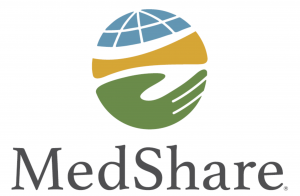This article was originally published in the GPR Fall 2017 Magazine
Special thanks to Caitlin Fischer of MedShare and Kathryn Hearn of MAP International, public relations officers for their respective organizations, as well as Mark Mosely, Senior Director of Cross International and an expert in international aid, for their contributions to this piece
In 1984, a famine engulfed Ethiopia. Exacerbated by a civil war and kleptocratic government, Ethiopians faced true destitution. Pictures of starving Ethiopians quickly made their way into Western newspapers, but it was televised scenes of the “biblical” Ethiopian famine — the first scenes of the African continent many Westerners had ever seen — which drove citizens of the Western world to empty their wallets for starving Africans. The response to the Ethiopian famine was unlike any before; aid organizations such as Christian Aid, Oxfam, and Save the Children more than doubled their annual number of donations. In an event which would define the decade, a televised, 16-hour rock concert benefit called “Live Aid” took place simultaneously in London’s Wembley Stadium and Philedelphia’s JFK Stadium, raising more than 100 million dollars for the famine — with Phil Collins famously flying on a Concorde jet to play in both concerts.
In hindsight, scholars have argued that the fanfare that developed around the Ethiopian famine, and particularly the Live Aid programs, resulted from the media’s portrayal of a humanitarian crisis solvable with merely shipments of food. Without long term engagement, however, the systemic problems leading to famines will recur. Throwing aid money at disaster relief, while not in itself a bad thing, is rarely an effective way to solve problems in lesser-developed countries.
On occasion, generosity has caused more harm than good. The massive Western response to the Ethiopian famine quickly overwhelmed the distributive resources of NGOs within the country, so donor organizations offered the Ethiopian government the excess funding even though it was embroiled in an all-consuming civil war. Both sides of the Ethiopian Civil War utilized starvation as a tool of war, and as in most modern-day famines, this was a primary determinant of the size and scale of the famine. Once the Ethiopian government was inundated with international aid, it diverted the supplies meant for the starving Ethiopian populace to its massive army, with food aid becoming its soldiers’ payment and an attraction for new conscripts. In this way, the Western aid response intensified and prolonged the war, extending the famine and indirectly contributing to the death of Ethiopian civilians.
This egregious failure of international aid, while particularly dramatic, is not the only example of backfiring aid. When NGOs send used clothing or when companies send donations of their products overseas, the local markets are negatively impacted — driving out local textile and manufacturing industries and actually generating a dependence on the developed world. Some evangelical aid organizations, too, are regularly criticized for requiring conversion for receipt of aid. And in 2012, 1.17 billion dollars were spent in Malawi only to have 30 million dollars siphoned out of the nation’s treasury by corrupt officials.
Since 1984, scholars and veteran practitioners in the international aid sector have commented on the flawed nature of the system through which developed countries provide humanitarian assistance. Mark Mosely, Senior Director of Cross International and an expert in the field of international aid, noted, “aid organizations often fail in their work because they work on immediate needs, but [aid organizations] need to transfer skills and capacity toward sustainable development. The only way to do aid correctly is to allow [communities] to participate in the direction of development projects, meeting the needs they help define. That’s how you provide good, solid, sustainable development”.
In pursuit of effective and sustainable development, a number of international organizations have developed best practices for international aid. These best practices generally recommend that aid organizations remain transparent to donors and minimize overheard costs to ensure that funding is spent on programs and not CEO salaries. Additionally, they recommend that aid organizations develop expertise so that aid consistently reaches and positively impacts those in need, rather than being lost due to lackluster program oversight, as in the Red Cross’s aid response to the 2010 Haiti Earthquake, or being misappropriated by kleptocrats, something the New York Times estimates happens to 20 to 40 percent of aid funding.
Writing checks for disaster relief without engaging communities is an ineffective substitute for sustainable development aid. As NGOs find themselves facing an increasingly educated donor-base, they are steadily aligning their work with internationally recognized best practices in international aid. The up-and-coming state of Georgia — with its worldwide connections offered by the Hartsfield-Jackson Airport and the ports of Savannah and Brunswick, its bourgeoning economy, and its growing educated workforce — has a number of organizations which are at the forefront of this movement, striving to ensure that international aid is provided in a manner which benefits those with the greatest need.
 MAP International, a Christian international aid organization headquartered in Brunswick, Georgia, works to increase access to essential medicines in locations where no market for medications and medical supplies exist. By supporting community programs that increase access to basic healthcare services in resource poor countries, MAP and its partner organizations reach more than ten million people every year, regardless of their religion, gender, or race. Through medical aid provided to refugees of the Syrian Civil War, the treatment of Neglected Tropical Diseases in Cote d’Ivoire, and medications provided to clinics in Guatemala, MAP is working with communities in more than 100 countries to provide sustainable solutions, impacting many of the world’s most poverty stricken people.
MAP International, a Christian international aid organization headquartered in Brunswick, Georgia, works to increase access to essential medicines in locations where no market for medications and medical supplies exist. By supporting community programs that increase access to basic healthcare services in resource poor countries, MAP and its partner organizations reach more than ten million people every year, regardless of their religion, gender, or race. Through medical aid provided to refugees of the Syrian Civil War, the treatment of Neglected Tropical Diseases in Cote d’Ivoire, and medications provided to clinics in Guatemala, MAP is working with communities in more than 100 countries to provide sustainable solutions, impacting many of the world’s most poverty stricken people.

MedShare, a secular international aid organization based in Decatur,Georgia, works to “strengthen health systems sustainably, to increase healthcare capacity of low-resource areas, and to improve the quality of life of peopleand our planet.” Organizations working in impoverished communities request needed medical supplies and equipment from MedShare, which then selects pieces from its inventory of repaired, surplus medical equipment, provides translated manuals, and ships the equipment to the requesting organization. Once the shipment is received, a biomedical engineer from MedShare travels to the requesting organization and trains its healthcare professionals on the use of the equipment and repairs any broken equipment. Providing biomedical equipment to hospitals in Ghana, resuscitation equipment to hospitals in Gambia, and medical gloves to hospitals in Haiti, MedShare helps to fulfill critical needs in 100 countries.
MAP International and MedShare are both highly regarded organizations, with each spending a mere fraction of their annual revenue on overhead costs. Over the past few years, more than 99 percent of MAP’s expenditures and almost 96 percent of MedShare’s were directed toward aid programs. Their impact, too, has been immense. MAP International treats more than ten million people each year and has provided more than six billion dollars of medical supplies since its inception. MedShare has equipped more than 766,000 healthcare professionals and treated more than 19 million patients. With these organizations, donor money truly reaches those in need.
Generosity, in and of itself, is never a bad thing. Sometimes, however, altruism can be rendered ineffective, or even harmful when the administration of aid fails. As international aid is increasingly directed toward more sustainable programs, the world may finally see development in the world’s poorest countries. In facilitating this work, however, donors are reminded to do their research. While providing aid is an inherently moral thing, some aid is ineffective — and a quick Google search can make sure that funding goes to organizations engaging communities with sustainable development aid.
